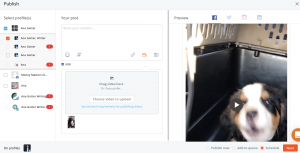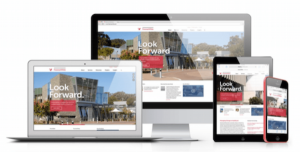
Are you driving traffic to your WordPress website?
Are you creating content, paying for ads or invested in social media?
All of these strategies cost money (even if it’s your time). Do you want to know the single factor that can ensure you’re getting the maximum value out of your dollar?
No, it’s not the targeting of your Google Ads. And no, it’s not creating more content or focusing more on search optimization.
It’s the page you’re sending people to.
Think about it. Let’s say you’ve spent $ 100 on Google Ads or in the complexity of creating a free trial, 10% discount or new consulting course and promoting them on social media. If you send those people to your website you’ll maybe get 5% of them to sign up for whatever your campaign is.
If you send them to a page dedicated to the campaign – a dedicated landing page – that number can go from 5% to 50%.
This article will show you why that’s the case and also how you can add landing pages to your own WordPress site.
Introduction to WordPress Landing Pages
In marketing terms, a landing page is a distinct page on your website that’s built for one single conversion objective. A landing page should be designed, written and developed with one business purpose in mind.
WordPress landing pages focus your traffic’s attention on one conversion goal and improve your campaign’s success.
With a WordPress landing page plugin, every time you create a campaign, you also create a landing page. In the same way you have a strategy to promote your campaign, you have a page devoted to converting people.
Landing pages are characterized by a few things:
- Devotion to a single campaign objective: This could be a free trial conversion, ebook downloading, course subscription, VIP demo, etc)
- Simplicity of message: Deliver exactly what your visitor needs to know and nothing more. Over-stimulating your visitor will just confuse them. Keep it high and tight.
- Obvious conversion goal: A WordPress landing page should feature what we call a “call-to-action” button prominently. This is the entire focus of the page and should contrast. If the goal of your landing page is hidden in a link within a paragraph, your page won’t convert
- Limited links off-page: You want to keep your landing page traffic on-page. This means limited (or no) navigation bar
A WordPress Landing Page Example
Let’s say you’d just released a new app for your design software. Smart marketers know to give the app its own specific product page. It has enough selling points to stand on its own.
Here’s an example of a WordPress landing page template for an app (this is the “stock” template you’d start out with):

Templates like the one above make the creation of a WordPress landing page super fast and easy. You can simply plug in your own logo, images and info and hit “Publish.”
And there are always enough (more than 100) that whatever your needs are, whatever your industry is, you’ll be covered:

How to Add a WordPress Landing Page to your Site
Any good WordPress landing page plugin should have a simple embed process. Once you’ve finished creating your landing page it’ll give you a few options for publishing. If you have the WordPress plugin already installed, just click the “WordPress Plugin” tab and copy the code into a new WordPress Page and hit Publish (that’s the top image below):
If you don’t have the WordPress plugin, simply click the “Script” tab and copy the code into your website Page manually (the bottom image above).
Top Tip: To remove your WordPress navigation bar and other layout and design elements which are already embedded in every Post (all that stuff at the top and bottom bar), add this bit of code:
WordPress Landing Page Best Practices
The templates you saw above already follow WordPress landing page best practices, but if you want to optimize even further, here are 7 best practices to remember…
- Be sure your call-to-action button contrasts clearly with the design of your page. Avoid paragraphs whenever possible. Use bullet points or columns instead.
- Have a catchy, specific headline that matches the messaging of your traffic source (the ad copy or social media post).
- Use professional images exclusively. Avoid stock photography.
- Remove external linking as much as possible. Any link off-page will lessen your page’s focus and decrease conversions.
- Include customer testimonials or positive reviews on applicable pages. This increases trust and conversion rates.
- Remove any form fields (from lead generation pages specifically) that you don’t need to convert leads in the future. More fields will just intimidate visitors.
Wrapping it Up
Hopefully this short guide has given you enough of a background in WordPress landing pages to recognize their importance.
If you have any questions whatsoever, don’t hesitate to reach out in the comment section below.
Digital & Social Articles on Business 2 Community(33)









